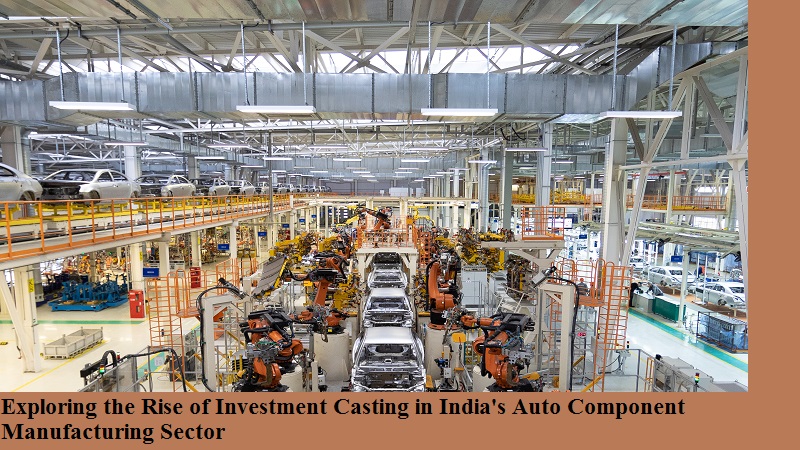Over the last several years, the Indian economy has been trending in a direction of fast expansion, which has been fuelled in large part by the flourishing automotive industry in the nation. India has emerged as a vital participant in the global automotive scene, with its auto component manufacturing business witnessing an inexorable increase. This is due to India’s substantial and young population, which has contributed to India’s climb to prominence.
The automotive component business in India has witnessed a remarkable transition, going from being a simple provider of raw materials to being a prominent participant in the global supply chain. The auto component manufacturing sector has emerged as a significant contributor to the country’s economic growth, with India now being one of the world’s largest producers of automotive components. Amidst this surge, investment casting has emerged as a game-changing technology that is revolutionizing the industry
As a result of the fastest growing in the automotive industry, the casting industry has seen an high growth of fifty percent of its entire capacity. Automobiles account for seventy to eighty percent of the total domestic shaping output.
Introduction: The Indian Auto Component Manufacturing Industry
The automobile sector in India is a significant contribution to the production economy of the nation. The auto component manufacturing (ACM) sector is providing support for this dynamic industry. This has resulted in India being a significant participant in the global automotive supply chain. Over the last several years, the number of Indian OEM suppliers operating in the ACM industry has increased.
According to information provided by the Indian Investment Grid, the Indian auto component business is now valued at roughly US$57 billion as of the year 2023. It is anticipated that this value will increase to US$85 billion by the year 2026. This growth is predicted to be driven by increasing demand, improvements in product quality, and increased competitiveness.
The Situation Of The Industry At The Present Time
The sector artificial intelligence, and the Internet of Things (IoT) are examples of cutting-edge technology that investment casting exporters are progressively embracing in order to improve their efficiency and competitiveness. This movement toward digitalization and automation has been seen in the automotive sector. Not only has this trend made it possible for businesses to make cost reductions and quality improvements, but it has also made it possible for them to enter new markets and increase their presence around the globe.
The Magic of Investment Casting in the Field of Automotive Development
When it comes to the fast-paced world of car manufacture, where components need to be able to survive harsh circumstances and demanding quality requirements, investment casting shines. Engineers are able to build sophisticated designs with the use of this method, which eliminates the need for secondary machining and reduces the amount of material waste. Investment casting has shown its worth in the production of high-performance and dependable automotive components, including turbocharger blades, engine components, and even sensitive bits found inside gearboxes.
The Indian auto component manufacturing sector has been a driving force behind the country’s economic growth, with the industry playing a crucial role in the production of automobiles and auto components. In recent years, investment casting has emerged as a vital technology that has revolutionized the way auto components are manufactured. Investment casting, also known as lost-wax casting, is a precision casting process that involves creating intricate and complex components with high accuracy and surface finish.
For the Indian auto industry, investment casting has become a game-changer, enabling the production of high-quality components with reduced lead times and lower costs. The process allows for the creation of complex geometries and intricate designs, which is particularly important for the manufacture of automotive parts such as turbochargers, cylinder heads, and engine components.

